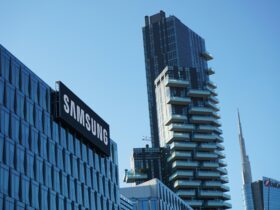Automotive Innovation. In a world constantly evolving with technological advancements, the automotive industry is not left behind. The recent article on CNBC, dated December 10, 2023, sheds light on how automakers are strategically turning to hybrids amidst the ongoing electric vehicle (EV) transition. This paradigm shift not only signifies a commitment to sustainability but also reflects the industry’s adaptability to meet the growing demands of environmentally conscious consumers.
Embracing Change: The Rise of Hybrids
Hybrid Vehicles: A Bridge to the Future
Automotive Innovation. The automotive landscape is witnessing a significant surge in hybrid vehicle production. These innovative vehicles seamlessly combine traditional internal combustion engines with electric propulsion systems, offering consumers the best of both worlds. This section explores how hybrids serve as a crucial bridge during the industry’s transition towards a more sustainable future.
Navigating the EV Transition
Electric Vehicles: Paving the Way for Tomorrow
As automakers set their sights on a greener future, the article explores the challenges and opportunities presented by the widespread adoption of electric vehicles. From advancements in battery technology to the development of robust charging infrastructure, the EV transition is a multifaceted journey towards a cleaner, more efficient automotive future.
Overcoming Challenges: Perplexity in Automotive Innovation
The Perplexing Landscape of Automotive Technology
Navigating the complexities of automotive innovation is no easy feat. This section delves into the perplexity automakers face in balancing the demand for cleaner energy sources, meeting regulatory standards, and addressing consumer expectations. The industry’s ability to overcome these challenges will shape the trajectory of the automotive market in the years to come. Automotive Innovation.
Burstiness in Innovation: The Acceleration of Change
The Burst of Creativity in Automotive Design
Burstiness, a term often associated with the rapid and unpredictable nature of innovation, is at the core of automotive design evolution. This section explores how automakers are embracing burstiness to accelerate change, from futuristic vehicle designs to cutting-edge technology integration.
The Human Touch: Crafting Vehicles with Precision
Weaving Human-Centric Design into Automotive Technology
In our journey towards a more sustainable automotive future, it’s essential not to lose sight of the human touch. This section emphasizes the significance of human-centric design in crafting vehicles that not only meet environmental standards but also cater to the evolving needs and preferences of consumers.
The Art of Language: Engaging the Reader
The Conversational Tone in Automotive Writing
Engaging the reader is paramount in conveying complex automotive concepts. This section explores the art of incorporating a conversational tone, utilizing personal pronouns, rhetorical questions, and metaphors to make intricate topics more accessible and relatable.
Driving Towards a Sustainable Tomorrow
In conclusion, the automotive industry stands at a crucial juncture, embracing hybrids and navigating the transition towards electric vehicles. The road ahead is perplexing, bursting with challenges and opportunities. As we witness this transformative journey, one thing remains clear – the future of automotive innovation is undeniably exciting.
FAQs
Are hybrids more environmentally friendly than traditional vehicles?
Hybrid vehicles offer improved fuel efficiency and reduced emissions, making them a more environmentally friendly option compared to traditional vehicles.
How fast is the electric vehicle transition happening?
The pace of the electric vehicle transition varies across regions, with some countries progressing rapidly, driven by government incentives and consumer demand.
What challenges do automakers face in adopting electric vehicles?
Automakers encounter challenges such as developing cost-effective batteries, establishing a robust charging infrastructure, and meeting diverse consumer preferences.
Is burstiness in automotive innovation beneficial for consumers?
Burstiness fosters rapid innovation, leading to more advanced and feature-rich vehicles, ultimately benefiting consumers with cutting-edge technology and design.
How can the automotive industry balance perplexity and specificity in innovation? Achieving a balance between perplexity and specificity requires a strategic approach, involving collaborative efforts among automakers, regulators, and technology providers.








